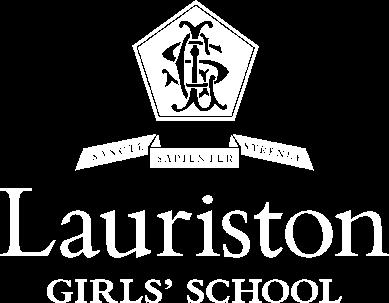Snowsports
Lauriston Girls’ School
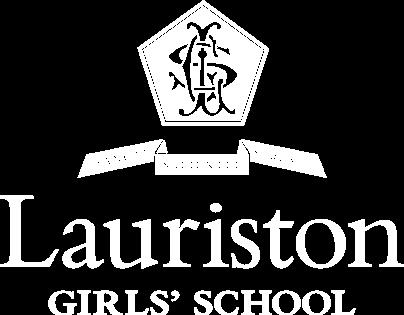
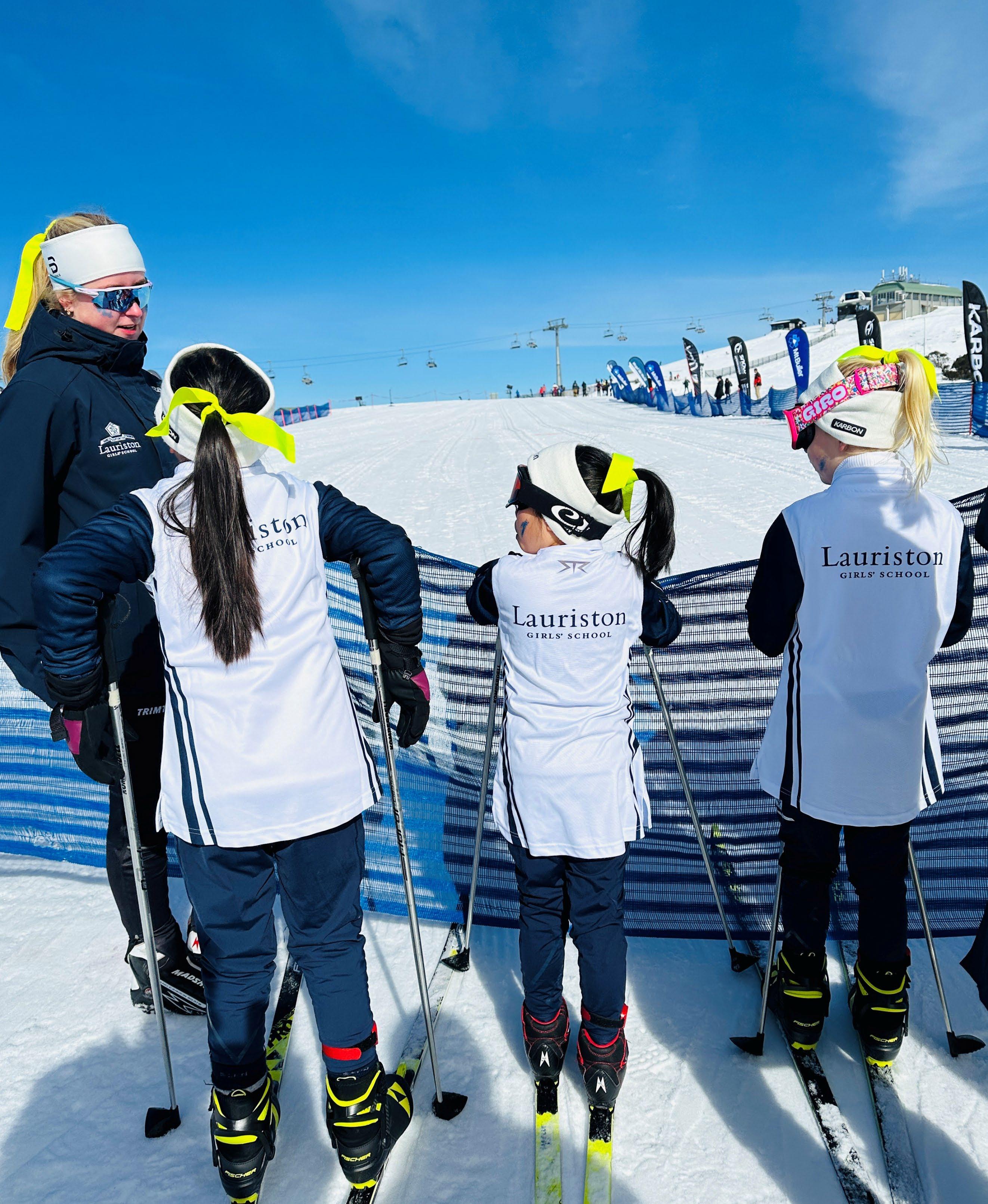


Lauriston Girls’ School



This handbook is designed to provide Lauriston families with both helpful and relevant information regarding Snowsports. The aim of Lauriston Snowsports is to encourage girls to participate, extend their competition experience and enter teams of girls into the various disciplines available in the Victorian Interschools Competition in August and into the Australian Championships at Mount Buller.
You do not need to be an expert skier / snowboarder as the level of competition is aimed at every type of participant from novice to expert racer. In any of the Victorian Interschool Competitions you will see a wide variety of participants in both ability and age. This is a team activity, and each participant is important regardless of level or ability. We look forward to supporting your daughter throughout the season.

Date
27-28 July Time Trials
27 July | Cross Country
28 July | Alpine, Snowboard, Moguls
27 July | LSSA Function
3 August Victorian Interschools Cross Country Snowsports
14 August Information Breakfast (ticket and bib collection) School Refectory TBC
18-24 August Victorian Interschools Championships
Div 6: Mon, Tues
Div 4 & 5: Mon – Wed
Div 2 & 3: Wed – Sun
Div 1: Fri – Sun
Buller
2-7 September Australian Interschools (Nationals) Mt Buller
Victorian Interschools (calendar of events, rules etc) | www.vicinterschools.com.au
Mt Buller (accommodation, snow reports, etc) | www.mtbuller.com.au
Australian Interschools | www.ausinterschools.com.au

Karl Lewis
Snowsports Coordinator
snowsports@lauriston.vic.edu.au 9864 7587
LSSA Committee
Role

Rob Cooper
Director of Sport
cooperro@lauriston.vic.edu.au 9864 7555


Zara Randle and Fleur Wightman
Snowsports Captains 2025
President Chris Randle 0412 340 094 vuegrand@bigpond.com
Vice President Tim Maddock tim.maddock@i2ilogic.com
Treasurer Nicole Randle nicolerandle7@gmail.com
Secretary Nick Sissons nsissons@gmail.com
Other Committee Members
Roland Kautzky
rolandkautzky@gmail.com
Felicia Yap yapyihteng@hotmail.com
William Ullmer thewilliam@gmail.com
Stella Che laylasama@hotmail.com
Richard Kloe richardk@headland.com.au
David Wightman
david@roadnightcapital.com
The Lauriston Girls’ School Snowsports Program has been established to promote and develop skills in a range of Snowsports activities. The objectives of the program are:
• To give program participants the opportunity to develop their skills in one or more of the Snowsports disciplines and to participate in competitions in those disciplines, including Alpine (Giant Slalom) and Freestyle (Moguls) Skiing,
• Snowboarding (Giant Slalom and Boardercross) and Cross Country Skiing, Boardercross, Skier Cross and Slope Style.
• To prepare participants competently for participation in the Victorian and Australian Interschools Snowsports Championships.
• To improve the skill level of Program participants.
Overview
• A Dry Land Training Program comprising weekly training sessions at school during Term 2 and 3 in a variety of fitness forms.
• An On–snow Alpine, Cross Country and Snowboard Training Program during our trial weekend, various training opportunities throughout the season and the Snowsports development camp in August at Falls Creek. Check Team App under ‘Events’.
• Participation in the Lauriston Trials for the Victorian Interschools Snowsports Competition, and in the competition itself.
• Participation in the Australian Interschools Snowsports Competition at Mt Buller, if a team is placed in the top six in the Victorian competition, or if a student is in the top fifteen individually (if there are more than 30 competitors in the race.
The on–snow Alpine and XC Training Program will be conducted by the Mt Buller Race Department by qualified instructors. Lauriston students choosing to participate in Snowsports can register via an online Snowsports registration form. Students participating in Snowsports are encouraged to take advantage of all opportunities presented within the program and to participate in race–training programs offered by the Mt Buller Race Club, the Falls Creek Race Squad or the Mt Hotham Race Squad when possible.
Please Note: All Lauriston students must be accompanied by a parent or guardian while on the mountain. Parents of students will also need to organise accommodation and transport to and from the mountain.
• Team App: The main form of communication during the competitions will be via Team App. Please download the app “Team App” onto your smart phone and select “Lauriston Girls Snowsports”. Comprehensive information, bookings for lessons including any last minute amendments from the event organisers can be sent to you from Lauriston Snowsports staff via the Team App.
• Schoolbox: Go to the Sport@Lauriston pages on Schoolbox for Snowsports Information including the handbook.
• Concerns or enquiries: Please phone or email the Snowsports Coordinator for any immediate concerns or make an appointment if you wish to discuss issues in more detail. The Director of Sport can also help you with any concerns or queries.
As with many co–curricular activities, it is not possible for Lauriston to compete without the active assistance of parents, and in that regard the Lauriston Snowsports Association plays a very active support role.
Lauriston is required to provide officials for each day of competition, as well as team managers for our teams. It is vital that we have the support of parents to fill these positions and encourage our students. The Interschools are a very busy, fun and exciting time. If you have never, been it is time to come and experience an amazing week of competition and excitement. All help is greatly appreciated. Please contact members of the Lauriston Snowsports Association for more information.
Generally, managing a team involves distributing the bibs, ensuring athletes are in the right place at the right time, ferrying unwanted gear to the bottom of the course (on skis or snowboard) and looking after the students before and after the event. Only competent skiers and snowboarders should perform the role of team manager, unless it is possible to walk to the event.
The event organisers require each school to contribute volunteer race officials. If the school fails to provide officials for an event, its teams, in that event, risk disqualification. Parents will be designated an event to officiate.
All students who wish to take part in Snowsports must enrol online via an online Snowsports registration form, which can be found in the Snowsports section on School box. The Snowsports Levy cost is:
$370* for the Trials and Interschools competition,
$210* for Trials only, Howqua students and first time (new) participants at Lauriston.
The levy includes staffing costs, student school-based activities, a loaned Snowsports jacket for the season and administration costs.
*Please note these are 2024 prices. Prices for 2025 to be advised in Term 2
The Lauriston Snowsports Association aims to support the Snowsports program through fundraising and season preparation, on mountain organisation, supervision and social activities to ensure the success of Snowsports.
All parents are invited to join the LSSA; all new members will be warmly welcomed.
The aims of the Association are to support the School Snowsports Program in the following ways:
• Bring the parents of Lauriston’s students together to help organise participation in Snowsports as well as competing in the name of Lauriston Girls’ School and engendering team spirit and camaraderie.
• To foster goodwill and enthusiasm for school Snowsports
• To raise funds to assist the school to develop a strong Snowsports Program
• To assist School Staff and Coaches responsible for training of girls and administration of Interschools Competition
Provide training and subsidies to facilitate widespread participation in Snowsports.
Meetings of the committee shall be held monthly between February and November.
• Transport and accommodation for your daughter/s to and from competitions
• Register your daughter with Snow racer (free mandatory insurance) www.vicinterschools.com.au/sign-here. Snow racer is now a requirement of competing in any Interschools Competition
• Support and encouragement
• Ensure your daughter is race ready – correct clothing, in good health, fed well and hydrated
• Photographer – any great shots of Lauriston competitors could be used for our End of Season dinner.
Please get involved with your kids and be part of the team! For more information speak to a member of the Snowsports committee.
$370* for the Trials and Interschools competition
$210* for Trials only, Howqua students and first time (new) participants at Lauriston.
The levy includes staffing costs, student school-based activities, a loaned Snowsports jacket for the season and administration costs.
Other costs:
• Transport & accommodation
• Competition fees (enter Trial Day & Interschools events via
• the Snowsports registration form)
• Training fees (subsidised by LSSA)
• Lift passes (select via online Snowsports registration form)
• Equipment hires (XC equipment is available for hire for a nominal fee from the Snowsports department)

Saturday 2 (Training) and Sunday 3 August, Mt Buller
The Victorian Interschools Cross Country Championships are held on Sunday 3 August at Mt Buller. It is compulsory for girls in the Cross-Country team to attend the training day (Saturday) in preparation for the Victorian Interschools XC Championships. Training on Saturdays at 4.00pm throughout the season at Mt Buller will be on offer (numbers permitting). Parents will need to take an “on course” official role or assist the team during the Victorian XC Interschools event on the Sunday
Monday 18 to Sunday 24 August, Mt Buller
The Victorian Interschools Snowsports Championships was first staged in 1958 at Mt Buller. The Championships are conducted over seven days, catering for primary and secondary school children throughout Victoria. These athletes have the opportunity to compete in each of the seven snow sport disciplines – Alpine Skiing, Snowboarding, Boardercross, Skier Cross, Moguls, Slope Style, and Cross–Country and, if successful, qualify for the Australian Interschools Snowsports Championships.
During the Interschools Competition week, Secondary School events are held from Wednesday to Sunday and Junior School events are held from Monday to Wednesday. The Victorian Interschools Snowsports Championships attract many of Victoria’s top junior athletes as well as many students who are relative novices to the sport of skiing and snowboarding. The competition provides the opportunity for entrants to compete for fun, fitness, their school, trophies and a state title. All participants in the Lauriston Snowsports Program are both encouraged and eligible to compete in the competition provided they participate in the trials.
Race Meeting
Protests
Opening/Closing Ceremony & Daily Presentations
Meeting Points and Times
Prep – Year 2 competitors
Meet your team manager at the top of the racecourse 15 minutes before course inspection opens.
The rules of the Victorian Interschools Competition: Team Managers are the only persons able to lodge a protest. Parents or competitors are not allowed to lodge a protest otherwise the team or School may be disqualified.
All Lauriston students on the mountain should join in and participate in representing the school in the official opening ceremony parade and daily presentations. All presentations are at the Mt Buller Sports Hall (usually at 5.00pm). All girls are expected to wear their Snowsports/PE uniform.
Meetings can become difficult in the snow depending on crowds and weather conditions. Please ensure you are at the correct meeting points well ahead of time. Please take into consideration queues and lift delays.
To ensure the safety of our younger athletes competing at the Interschools, girls will be chosen to compete using the following guidelines:
Needs to be an intermediate skier who can ski in control down a blue run
Needs to have skied in all weather conditions
A parent must be with the competitor at all times
Compulsory attendance at the Trial Day
Competitors ski down a timed course from a race start through gates to a finish line at the other end of the course. The gates are set at a moderate distance apart. Each competitor completes two runs, and receives a time provided she is not disqualified, for example, through missing a gate. Prior to the start of each run, competitors complete a course inspection by sideslipping the course. Competitors must wear both race bibs and helmets while inspecting the course and racing. Athletes will race in bib orde r in the first run, and reverse bib order on the second run.
The times for each run are added together to determine the individual’s place in the competition. Teams may comprise three or four skiers, with the fastest three times from the first run and the fastest three times from the second run being added together to determine an overall time for the team. The team and the individual with the lowest aggregate time win the competition. Gold, silver and bronze medals are awarded to the fastest three individuals and the fastest three teams.
Teams are comprised of two or three skiers. Participants complete one run down the mogul course and must execute at least one jump. Prior to the start of competition, competitors are allowed to practice on the course for approximately one hour. Competitors must wear both race bibs and helmets while training and racing.
Each competitor is awarded a score, 25% based on time, 25% based on the jump and 50% based on mogul skiing technique. For teams, the highest two scores are combined.
The individual with the highest score and the team with the highest aggregate score wins the competition. Gold, silver and bronze medals are awarded to the individuals and teams with the best three scores.
Competitors board down a timed course from a race start through gates to a finish line at the other end of the course. The gates are set at a moderate distance apart. Each competitor completes two runs, and receives a time provided she is not disqualified, for example, through missing a gate. Prior to the start of each run, competitors complete a course inspection by sideslipping the course. Competitors must wear both race bibs and helmets while inspecting the course and racing. Athletes will race in bib order in the first run, and reverse bib order in the second run.
The times for each run are added together to determine the individual’s place in the competition. Teams may comprise two or three boarders, with the fastest two times from the first run and the fastest 2 times from the second run being added together to determine an overall time for the team. The team and the individual with the lowest aggregate time win the competition. Gold, silver and bronze medals are awarded to the fastest three individuals and the fastest three teams.
In Boardercross, participants board down a timed course with banks and jumps. Competitors must wear both race bibs and helmets while inspecting the course and racing. After a round robin, the top sixteen competitors in each division will make the finals. The fastest three boarders in the final receive individual gold, silver and bronze medals. Team medals are awarded on combined times.
In Skier Cross, participants ski down a timed course with banks and jumps. Competitors must wear both race bibs and helmets while inspecting the course and racing. The top sixteen competitors in each division will make the finals. The fastest three skiers in the final receive individual gold, silver and bronze medals. Team medals are awarded on combined times
Cross Country Classical is a cross–country event raced using classical technique with classical skis. Teams are generally comprised of three participants. These events are conducted at one time over a single course on a mass start, with the first across the line being the winner. The courses are of varying distances, depending on the Division. Division 5 competes on the shortest course, while Division 1 competes on the longest course. Gold, silver and bronze medals are awarded for the fastest three individuals and the fastest three teams.
Each team comprises three participants. Competitors complete a full course and tag the next team member to then complete their course. The first team across the line wins. Gold, silver and bronze medals are awarded to the fastest teams. Athletes competing in the relay event when it’s at Perisher use skating skis.
Competitors are judged on a modified terrain park including jumps and features. This event is only open to Divisions 1-3.
Participants in the Interschools compete in Divisions. Each Division comprises two-year levels in accordance with the following:
Division 1: Years 11 and 12
Division 2: Years 9 and 10
Division 3: Years 7 and 8
Division 4: Years 5 and 6
Division 5: Years 3 and 4
Division 6: Prep to Year 2
Any girls wishing to participate in further on snow training/competitions can refer to the websites below.
The Athlete pathways across all disciplines in Australia start above Interschools competition. Many children each year train and compete with the various resort-based clubs in Victoria. From there children can participate in development squads and camps as they further their pursuit to be an elite athlete in their chosen discipline.
Please visit www.vicinterschools.com.au/athlete-pathway to find organisations which conduct programs as part of the Athlete Pathway in Victoria, such as:
Ski and Snowboard Australia
Falls Creek Race Club
Team Buller Riders
Transition Snowboarding
Mt. Buller Race Club
Hotham Racing Squad
Olympic Winter Institute of Australia
Hotham Freeski

The objective of team selection at Lauriston Girls’ School is:
• to encourage participation at the Victorian and Australian Interschools Championship
• to enter at least one team in every division of each discipline at the Victorian Interschools Championship
• to enter the best possible Lauriston teams providing maximum opportunity for overall school success across the divisions and disciplines
The criteria outlined below provides a transparent means for competitors and parents to understand how teams are selected. The final decision for selection rests with the Coordinator of Snowsports and Director of Sport.
All students who choose to compete in the Victorian Interschools Championship must take part in the Lauriston Girls’ School trials at Mt Buller. With the exception of Skier Cross and Snowboard Cross, a student must take part in Lauriston Girls’ School trials for each category she enters. The best single run result (of two possible runs) from the Lauriston Girls’ School trials will be used to rank all competitors. These results will be the basis for Victorian Interschools Championship team selection.
A student will only be granted exemption from the trials in exceptional circumstances which include:
• Competing at an accredited event on another mountain (as approved by the school)
• Medical grounds (for which a medical certificate is required)
In the case of exceptional circumstances, the following procedure will be employed in an attempt to rank the student into an appropriate team:
• Consideration of the student ranking from the Lauriston Girls’ School trials in the preceding year as compared to the relevant Lauriston students;
• Consideration of Ski and Snowboard Australia (SSA) and FIS external event results if applicable;
• As required, two independent advisors as appointed by the Coordinator of Snowsports and Director of Sport will be engaged to provide a recommendation on team selection. Should a student crash on both trial runs, selection to the Lauriston Team will occur following all students having completed one run successfully.
In the Junior School (Prep – Year 6), a team finishing in the top six of their division at the Victorian Interschools Championship will qualify the participants to compete at the Australian Interschools Championship. There will be no changes to the composition of the team.
Should a student become unavailable for the Australian Interschools Championship, the vacant position will be offered to the next student from within that division in order of ranked results from the Victorian Interschools Championships. Promotion of a competitor to compete in a higher age division will only be considered in the case of inadequate competitor numbers to form a complete team. Promotion will be based on the individual ranked results and from the Victorian Interschools Championships. This will not be implemented at the expense of a team in a lower division.
Should exceptional circumstances require consideration for team selection for the Australian Interschools Championship, two independent advisors will be engaged to provide a recommendation to the Coordinator of Snowsports and Director of Sport.
In the Senior School (Year 7 – 12), a team finishing in the top six of their division at the Victorian Interschools Championship will qualify the team to compete in the Australian Interschools Championship. Should a team member’s individual combined ranking result from the Victorian Interschools Championships be surpassed by another Lauriston student within that division, the composition of team members will be altered provided compliance with Australian Interschools Championship rules (the fastest original member of the team will remain in the team and in the case of Alpine Giant Slalom, the two fastest original members will remain in the team).
Should a team member be unable to participate at the Australian Interschools Championships, the vacant position will be offered to the next fastest participant in order of combined ranking result within that division from the Victorian Interschools Championships.
Promotion of a competitor to compete in a higher age division will only be considered in the case of inadequate competitor numbers to form a complete team. Promotion will be based on the individual combined ranking results of all Lauriston students from the Victorian Interschools Championship. This will not be implemented at the expense of a team in a lower division.
Should exceptional circumstances require consideration for team selection for the Australian Interschools Championship, two independent advisors will be engaged to provide a recommendation to the Coordinator of Snowsports and Director of Sport.
Howqua students will be provided with the opportunity to compete in Lauriston’s Time Trials and Interschools Events. Due to Howqua’s 2024 intensive training program, students will only train for events whilst at Howqua and not with Armadale’s on mountain training program.
Eligibility to compete for Lauriston at the Victorian Interschool Skiing Championships is restricted to the following:
•
•
•
•
• Athletes who have previously competed for Lauriston
• Athletes who have previously competed for a school prior to attending Lauriston
• Those who have previously registered to compete for Lauriston but were unable to due to the cancellation of the event due to Covid restrictions
• Those who have previously registered to compete for a school prior to attending Lauriston but were unable to participate due to the cancellation of the event due to Covid restrictions
Those athletes meeting the above criteria are eligible to register and compete for Lauriston in all disciplines at the Victorian level.
20–25 athletes will be eligible under the above criteria. Those athletes will require return transportation from the Howqua Campus to Mt Buller prior to and after the training and competition days. It is encouraged that all transportation to and from Mt Buller is to be provided by parents as well as Howqua vehicles and staff assistance when possible. Pre-arranged location and times will facilitate this operation.
Parents are responsible for their daughter’s supervision, food and accommodation on the mountain at all times.
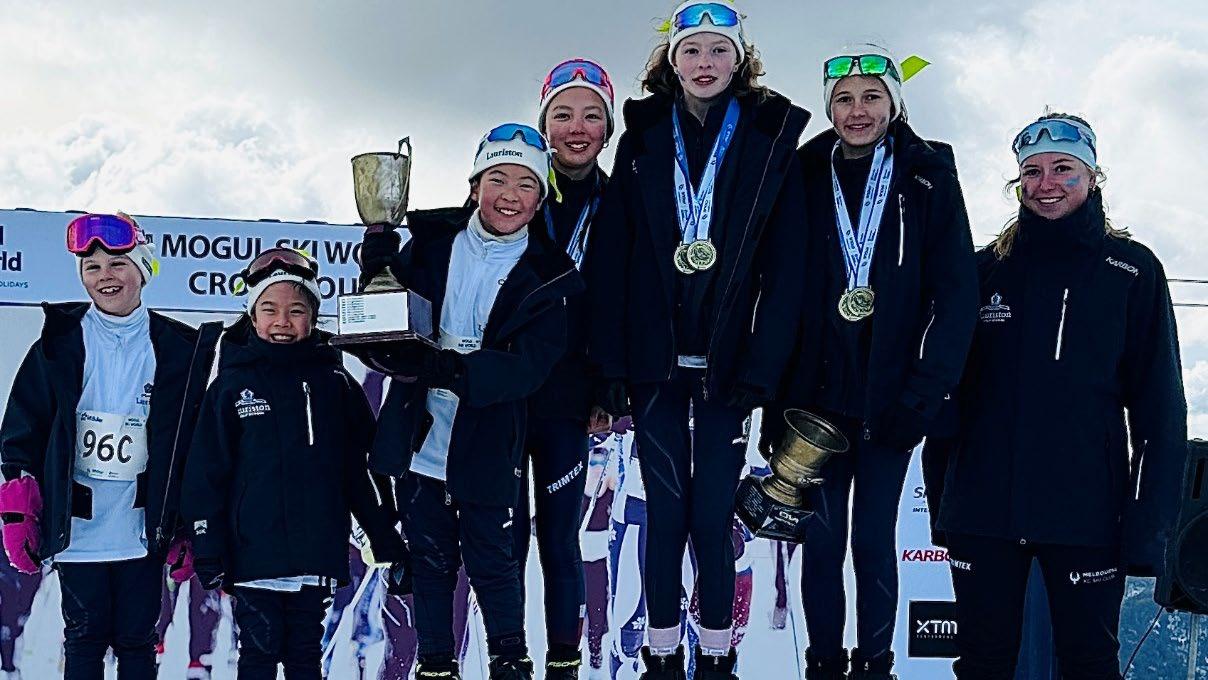
All students competing in Interschools Competitions must be accompanied by a parent or guardian. It is the responsibility of each family to arrange their own accommodation.
Generally, families arrive at Mt Buller the day before the first event and leave after the medal presentations for the last event.
Please book your accommodation early. Accommodation bookings in the Interschools week are extremely heavy, and you may miss out if you leave it too late.
Information on a range of available accommodation can be found at: www.mtbuller.com.au/accommodation
Buller Holidays
1800 285 537 bullerholidays.com.au
Collegians ski club, Breathtaker Rd Mt Buller
Contact Sue Ferguson 0414 528 678 (discounted rates for Lauriston families) collegiansskiclub.org.au
Medal presentations are generally at the Mt Buller Gymnasium at 5.00pm on each day of the competition. However, please check the detailed timetable supplied just prior to the Interschools competition for the exact time. Presentations on all afternoons will generally take about one hour.
Athletes and parents will also have the opportunity to purchase athlete competition photos, which are generally on display at the venue.
Each athlete is required to wear an item of the School Snowsports / PE uniform – preferably the Snowsports hoodie, to identify her with the School at the event. Girls should remember that they are representing Lauriston Girls’ School at the presentation ceremonies and dress accordingly.
GS Suits may be worn for Alpine events (except Div 5 & 6). Regardless of what the athlete races in, she needs to wear proper protective clothing before and after the race. This will include the appropriate ‘layers’ of clothing, depending on the weather conditions, and waterproof jacket. Please consult the Victorian Interschools competition rules for your discipline’s clothing requirements here: vicinterschools.com.au
Uniform Shop
The following items are available from the Uniform Shop:
• Lauriston long sleeve performance top (ideal for cross country)
• Compression tights
• Snowsports hoodie
• Snowsports jackets
The quality and suitability of ski and snowboard equipment will make a significant difference to athlete performance. If you are hiring, you need to hire carefully. If you own your own equipment, you must ensure that it is tuned. Lauriston Snowsports will hire out our XC equipment at a nominal cost to competitors.
Lauriston has a sound association with the following outdoor retail stores. Both these stores offer a discount to Lauriston Snowsports families. If you are hiring your gear, remember to organise it well before the Interschools so you don’t miss out, especially for Cross Country as stocks are limited. Thousands of other students are also requiring equipment for Interschools.
Ajays
Contact Robbie Hiam for all your needs including Alpine Ski, Snowboard, Cross Country Ski gear to buy or hire and servicing. They do all ski and board servicing and repairs and are happy to offer advice for free).
115 Canterbury Road, Heathmont, 3135 (between Wantirna and Bayswater Roads). 9720 4647 | ajays@snow–ski.com.au
Eastern Mountain Centre
Contact Doug Evans. EMC is affiliated with Ajays but offers a little more Cross Country and a little less Snowboarding, and you are guaranteed to receive excellent service and advice. Buy or hire gear, they service and repair equipment as well as race prep and race waxing.
68 Whitehorse Road, Deepdene, 3103 (Cnr of Barnsbury Road) 9817 1477 | emc@snow–ski.com.au
Prior to Interschools, updates will be issued with precise information about when to arrive at the start for your event. In general, though, get there early. It is your responsibility to be there on time. If you are staying on the Stirling Track, and you have to get to Burnt Hut Spur, allow at least 30 minutes for the trip. If you need to arrive 15 minutes before course inspection, leave from your accommodation 45 minutes prior to course inspection. The last thing athletes need prior to a race is panic, so check the race time, and leave plenty of time to get there. If participating in a moguls event race training is often well before the race.
Interschools racing, particularly alpine skiing events, involves a lot of standing around in sub–optimal conditions, due to the time it takes for a large number of competitors to complete their runs. This can result in athletes getting cold and tired.
Athletes should have snacks with them to keep them going during the race period.
Parents – before and during the race
If you are not a course official, and you are on the mountain, please be at the start to help carry jackets and other gear not needed by athletes during the race from the top to the bottom. Assist team managers or race officials if possible. Try to be at the bottom when your daughter finishes and provide her with encouragement. Racing is stressful, and soothing parental reassurance is a valuable commodity both prior to and at the end of a race. Parents are asked to allow students time alone once they line up to compete to compose their thoughts.

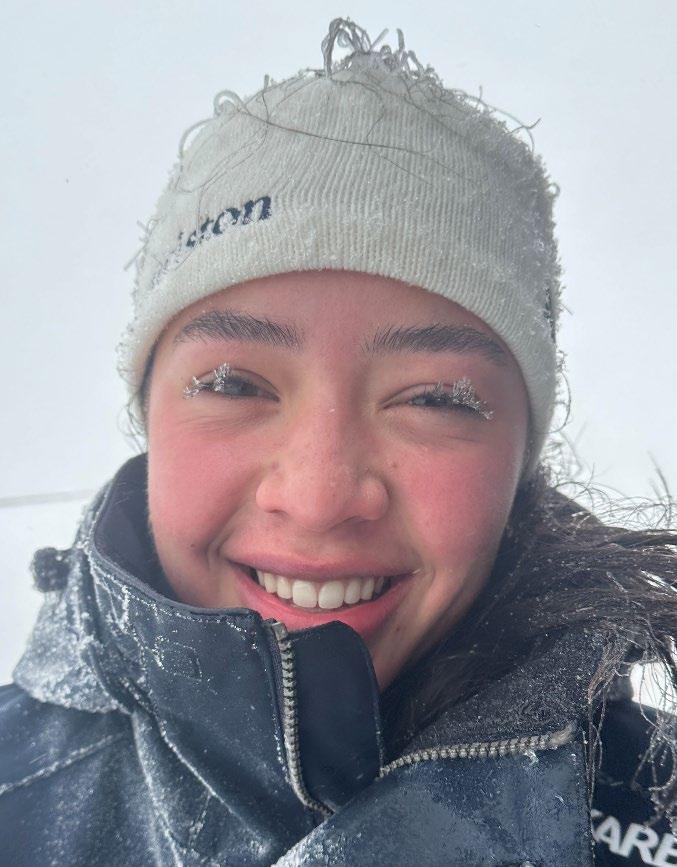
Our aim is for all members of the Snowsports community to stay safe, so please discuss this with your daughter. The alpine code of conduct should guide you when you ski or board. It is there for your safety. It is reproduced from www.snowsafe.org.au.
Regardless of how you enjoy your snow sport, always show courtesy to others. Be aware that there are inherent risks in all snow recreational activities that common sense and personal awareness can reduce. These risks include rapid changes in weather and surface conditions, collisions with other people, and natural and artificial hazards such as rocks, trees, stumps, bare spots, lift towers and snow making equipment. It is your responsibility to stay in control on the ground and in the air.
• Know your ability. Always stay in control. Be able to stop and avoid other people or objects.
• Take lessons from qualified professional instructors to learn and progress.
• Do not stop where you obstruct a trail or run or are not visible from above.
• When entering a trail or run or starting downhill, look uphill and give way to others.
• Always use proper devices to prevent runaway equipment. Ensure your equipment is in good condition.
• Avoid people ahead of you – they have right of way.
• Observe all signs and warnings. Keep off closed trails or runs and out of closed areas.
• Before using any lift, you must have the knowledge and ability to load, ride and unload safely.
• Do not ski, snowboard, ride a chair lift or undertake any other alpine activity, if drugs or alcohol impairs your ability.
If you are involved in a collision or witness an accident, alert Ski Patrol, remain at the scene and identify yourself to the Ski Patrol. To assist School Staff and Coaches responsible for training of girls and administration of Interschools Competition.
NB: Failure to observe the code may result in cancellation of your ticket by the Ski Patrol or other authorised personnel.
The following information is reproduced from www.snowsafe.org.au
Every year people become lost in the mountains and ski areas of alpine country. To care for people in the snow, all major ski resorts maintain skilled Ski Patrols throughout winter months.
Ski patrollers can be identified in all resorts by their distinctive blue uniform with yellow Maltese cross or red and black uniform with white Maltese cross. They are highly trained to deal with injured skiers and boarders, both within the resort and beyond resort boundaries. Patrollers open and close trails and runs, and mark hazards. For your safety, as well as that of others, obey the signs that are displayed by the Ski Patrol
Lauriston Girls’ School Snow sports Handbook | 20 Correct at time of publication, 26 February 2025. All information is subject to change.
In case of an accident
• Approach them from below or the side if the slopes are icy.
• Do not leave the injured skier/boarder alone.
• Do not remove your own skis/board if the slopes are icy.
• If it is safe to remove your skis/board, cross them and place them upright uphill from the injured skier/boarder.
• Do not remove the injured person’s skis/board.
• While one person remains with the injured skier/boarder make sure another reports the accident to any ski patroller or the nearest lift operator – say what the person is wearing –there can be more than one accident on the same run at the same time.
• Have someone stand uphill from the accident to give a verbal warning to other snow users when someone, including a Ski Patrol, is attending to the patient.
• Give the exact location of the accident and nature of the injury and wait for the patroller.
• Reassure the patient and keep them warm. Do not move them or attempt to treat them unless you are qualified in first aid. If a companion becomes lost
• Make sure your companion hasn’t just returned home to the ski lodge or car.
• Inform the Ski Patrol as soon as you are concerned.
• Give your companion’s name, age, etc. and a full description including any details of your skiing/boarding activities. Remember
• Never ski alone.
• Ski with your team members and look out for each other.
• Let someone know before you go.
• Indicate your intended destination and route – this is especially important for cross–country skiers.
• Stick to the planned arrangements. If you do not, others will become concerned and call out emergency services. This endangers the lives of others searching for someone who is not lost.
Fitness
It is recommended that, in addition to the weekly training session, the girls are:
• Stretching – for at least 20 minutes daily
• Aerobic Training – Run/walk/cycle for 30 minutes twice a week.
• Anaerobic Training – Weight work, hill or flat sprinting.
Prevention of Injury
Skiing and snowboarding are popular sports and there is a broad range of ages and standards among athletes. They are physically demanding sports that require strength, flexibility, endurance, cardiovascular fitness, anticipation and reflexes. The competitor equipment and the environment all play a role in both the occurrence of injuries and their prevention.
Safety tips for Snowsports participants
• Good preparation is important.
• Undertake pre–season conditioning and training.
• Warm up and stretch before the day’s skiing or snowboarding.
• Establish the snow conditions and take them into consideration, along with your skill level, before skiing or snowboarding.
• Don’t start jumping manoeuvres until you have had proper instruction on how to jump, and have some experience. Jumps are the most common cause of spinal injuries among snowboarders.
Equipment: Suitability and Maintenance
• Seek professional advice when choosing equipment to suit your activity, skill level and size.
• Keep equipment in good working order.
• Ensure a professional undertakes adjustment of ski bindings. Properly adjusted ski bindings have the potential to prevent lower limb injuries. Do not adjust the bindings yourself.
• Boot characteristics such as individualised fit and comfort, temperature isolation and lack of pressure areas will help prevent injury.
• Ensure all rental equipment is properly fitted and adjusted.
• Helmets may prevent head injuries and is recommended for children. Ensure helmets are of a satisfactory standard with perforations or ear holes to assist with hearing.
• Snowboarders: wrist guards and knee pads can help protect you when you fall.
• Wear suitable clothing, particularly a hat or helmet and gloves, to protect against variable alpine conditions.
• Eye wear that gives ultra–violet protection and a sunscreen with a high SPF (30+) should be worn, even on cloudy days. Be aware of the grading of the runs. Only ski/snowboard on runs suitable to your skill level
• Do not ski/snowboard too fast and out of control. If you find yourself skiing or snowboarding out of control, fall down on your rear end or on your side, the softest parts of your body
Lauriston Girls’ School Snow sports Handbook | 22 Correct at time of publication, 26 February 2025. All information is subject to change.
• Do not ski/snowboard in out–of–bounds areas and never ski/snowboard alone.
• Look out for your teammates and ski together as a team. Other safety tips
• Be aware of hazards such as snowmaking or grooming machines, or natural hazards such as trees and rocks.
• Adequate rest, nutrition and energy replenishment will enhance performance and reduce the likelihood of injury.
• If you are tired, stop and rest. Fatigue is a risk factor for injuries.
The following information is reproduced from www.snowsafe.org.au
Anyone with asthma should be able to venture onto the slopes safely by taking a few precautions. Even people whose asthma is triggered by cold conditions should be able to cope at high altitudes as long as the asthma is well controlled. It is a good idea to have a written management plan, knowing what you need both for prevention and relief of your asthma and what to do for deteriorating asthma.
Stock up on all the medication you will require, as well as some extra. A letter from your GP outlining the history and severity of your asthma and treatment would be helpful if medical attention becomes necessary.
In freezing conditions, pressurised inhalers may not work properly. They should be warmed (in the hands, for example) before use. It is important to remember to keep taking your medication as directed while you are away. It is recommended you talk to your GP, specialist or the Asthma Foundation as part of your preparation for hitting the slopes.
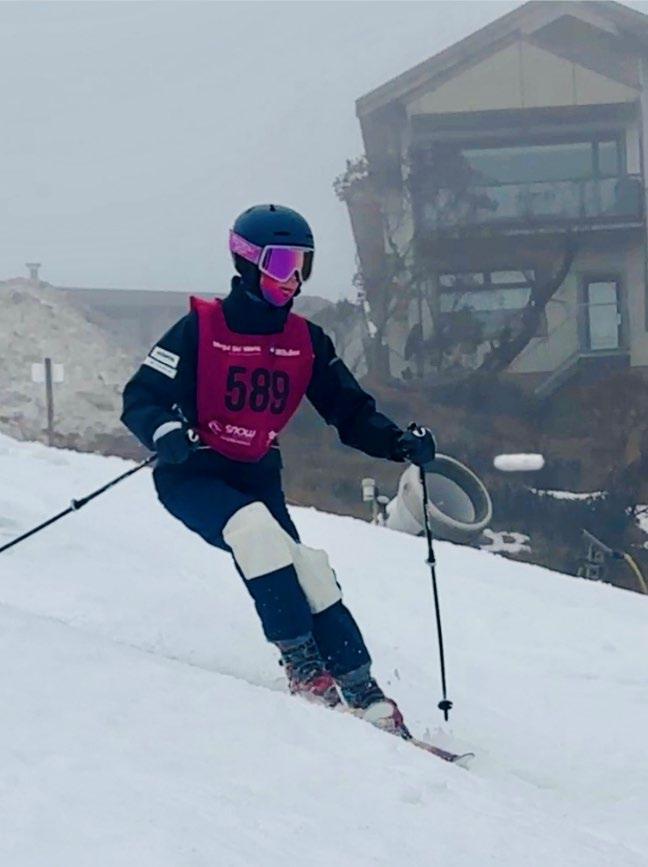

• Athletes have increased protein requirements according to the nature of activity and training demands.
• Carbohydrates are the most important fuel source for exercise.
• Inadequate carbohydrate and water intake can contribute to fatigue.
• Inadequate diet may lead to vitamin or mineral deficiencies e.g., Iron.
• Improved power to weight ratio can be achieved. How do I maintain optimal energy levels?
• Eat regularly.
• High carbohydrate snacks are important to maintain blood glucose levels.
• Consume high carbohydrate foods every 1–3 hours.
• High carbohydrate foods include fruit, muesli bars, fruit buns, scones, rice, pasta, noodles, cereal, potato, fruit yoghurt.
• Bananas
• Grain & fruit–based bars
• Fruit bars/ slices
• Rice crackers
• Mini wheats/ Nutri–grain
• Dried fruit
• Nuts
• Jelly type sweets (snakes etc.)
Pre exercise meal ideas
• Consume 2–4 hours before the event
• High carbohydrate
• Low fat
• Low to moderate fibre
• Include 300–500ml fluid. Examples include:
• Breakfast cereal with low fat milk/yoghurt Toast/Crumpets/Bagels/Muffins with jam
• Banana sandwich
• Pasta with tomato based sauce
• Baked potato with salad/low fat cheese Fruit smoothie
• Rice dish
• Pancakes with syrup.
• Carbohydrate rich food immediately following exercise (within 30 minutes).
• Small amount of protein may enhance glycogen restoration (recovery).
• Aim to drink 150% of estimated fluid loss as soon as possible.
Hydration
• Level of hydration affects energy levels and effort that can be put into exercise.
• VERY important for anyone who is active
• Performance is affected by as little as 2% dehydration.
• Greater than 2% dehydration may lead to gastrointestinal problems and decreased temperature control.
• Water is best to drink.
• Sports drinks may be appropriate to replace carbohydrate, promote fluid intake and enhance absorption.
• Fluid requirements are specific to the individual.
• Fluid intake should be regular throughout the day
• Do not wait until you are thirsty to drink.
• Pre–exercise: 300–400ml is a guide to how much to drink.
• During exercise: 150ml every 10 –15 minutes or more than 600ml per hour.
• Hydration can be tested by urine colour – should be clear.
Summary
• A healthy balanced diet is important.
• High carbohydrate, low fat.
• Extra carbohydrate before, during and following exercise.
• Adequate fluid intake
• Essential for optimal health and growth.
• Delay the onset of fatigue.
• Improved power to weight ratio.
• Remember that children participate in sport for their enjoyment, not yours.
• Encourage children to participate, do not coerce them.
• Provide positive focus on the child’s efforts and performance rather than winning or losing.
• Encourage children to always participate according to the rules. If you disagree with an official, have your Snowsports coordinator approach the Chief of Race who will pursue an acceptable resolution.
• Remember that children learn best by example. Appreciate good performances and skills shown by all participants.
• Support all efforts to remove verbal and physical abuse from on and off field activities.
• Respect the officials’ decisions and teach children to do likewise.
• Respect the rights, dignity and worth of every student regardless of their gender, ability, cultural background or religion.
• Show appreciation and be courteous to Snowsports coordinators, parents, competitors, volunteer coaches, officials, team managers and administrators. Without them, your child could not participate.
• Respect all the support people involved with Interschools events that enable the event to occur. These include but are not limited to mountain, shop and lodge staff.
• Show consideration for the mountain and other users. Respect the rules that resorts have put in place.
• Your safety and those around you is at stake. Observe the Alpine Responsibility Code.
• Do not interfere with the conduct of any events.
Extracted from the Victorian Interschools website.
